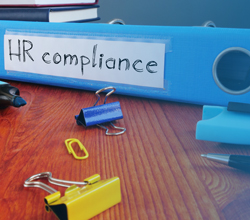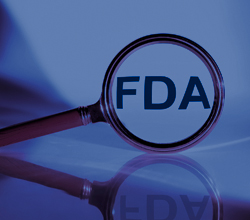
Leave in the Time of COVID: Navigating Employee Leave Under FFCRA, FMLA, ADA and Workers' Comp
 Janette Levey Frisch
Janette Levey Frisch
 90 Min
90 Min
Product Id: 706583
In addition to the FMLA and the ADA, now we have the Families First Coronavirus Response Act (FFCRA), mandating paid leave for many employees for COVID-related reasons. In this webinar, we will discuss key, hot-button compliance issues and share some Best Practices for managing a workforce while staying in compliance with the FFCRA, the FMLA, ADA, and Workers’ Comp.

Reshoring American Manufacturing in the Era of COVID-19
 William Levinson
William Levinson
 90 Min
90 Min
Product Id: 706570
The United States' loss of manufacturing capability in the past decades has led to a decline in the nation's standard of living, and has also weakened its geopolitical strength. The COVID-19 outbreak has meanwhile underscored the vulnerabilities of extensive supply chains that include unreliable trading partners. Proven off-the-shelf methods and principles are however available to rebuild the United States' manufacturing capability and make it more profitable for all stakeholders.

Mission Possible: How to Obtain A Zero Injury Culture In The Workplace
 Michael Aust
Michael Aust
 60 Min
60 Min
Product Id: 704739
This zero tolerance for injuries training program will discuss what it means to have a safety culture on site. It will also identify the four steps of the safety maturity curve and discuss employee and employer rights and responsibilities at each step of the maturity curve. The instructor will explain the benefits of sustaining a safety culture in the workplace.

The ABC's of Processing ACH Exceptions (Returns)
 Donna K Olheiser
Donna K Olheiser
 90 Min
90 Min
Product Id: 705353
Have you struggled with the question - “When do I use a Stop Pay form and when do I need a Written Statement of Unauthorized Debit (WSUD)?” This is YOUR session! The trainer in this session will provide examples of when to use which form and why plus tying this information back to what the NACHA Operating Rules state to ensure you are in compliance each time you help your account holder with their request. With the newly adopted Rules change for 2020 with “unauthorized returns” what Return Reason code do I use and why? Return Reason Code R10 or R11 and what is the difference when using these to return Entries as unauthorized? Key points illustrated during this virtual workshop will assist your customer service and front-line staff as well as your operations staff.

HR Audits: Identifying and Managing What Happens Next as the Result of Pandemic
 Ronald Adler
Ronald Adler
 90 Min
90 Min
Product Id: 703882
This HR Audit webinar will cover key strategic, operational, and compliance HR management issues. The objective is to provide the attendee with the key areas that should be addressed in conducting an HR audit, an understanding of critical tasks to be completed, and an update how federal and state employment laws may affect the scope and the reporting of the HR audit.

Master Advanced ICD-10-CM Concepts and Prevent Coding Errors
 Victoria M Hernandez
Victoria M Hernandez
 60 Min
60 Min
Product Id: 706097
This ICD-10-CM webinar will cover day-to-day complex challenges for coding professionals and CDI professionals, which includes advanced areas of the coding guidelines, coding conventions, strategies to address documentation issues and query best practices. It will also review challenging CDI, coding and audit case scenarios and review query examples, coding references and clinical indicators on common diagnoses considered as complications/comorbidities (CC) and major complications/comorbidities (MCC).

Training and Development in The Life Sciences - Build Training That Works
 Charles H Paul
Charles H Paul
 60 Min
60 Min
Product Id: 706542
This webinar will explore the area of training in regulated environments, its importance, and its relationship to compliance documentation. You will learn how to achieve world-class compliance, improved operational performance, improved quality, and improved employee/associate safety through training.

Constructing a Benefit-Risk Analysis
 Don Hurd
Don Hurd
 60 Min
60 Min
Product Id: 706571
ISO 14971:2019 requires an overall Benefit-Risk Analysis but many companies struggle with constructing the rationale for demonstrating overall benefits outweigh overall risks. This webinar will provide one systematic approach which has proved successful for approaching the analysis.

An Introduction to FDA's Regulation of Human Cells, Tissues, and Cellular and Tissue-Based Products (''HCT/Ps'') including Stem Cell-Based Drug Products for Human Use
 Karl M. Nobert
Karl M. Nobert
 90 Min
90 Min
Product Id: 701927
This webinar will review FDA's regulatory oversight of stem cell-based products when used in humans and analyze its potential impact on the industry in the future. Learn FDA's criteria for marketing and promotion of stem cell-based products for therapeutic application.

US FDA's Plan for Modernizing the 510(k) Pathway - Meet the New Expectations
 John E Lincoln
John E Lincoln
 90 Min
90 Min
Product Id: 706580
Almost two years ago the US FDA announced new steps necessary to modernize FDA’s 510(k) clearance pathway, but companies have been slow to respond, leading to unnecessary delay in achieving marketing clearance. This was reiterated one year ago in the FDA’s Medical Device Safety Action Plan and the related Draft Guidance Document. These steps are viewed by the Agency as a top priority, and provide insight into the Agency’s thinking about what a 510(k) could do to advance medical benefits to the patient.

Outlook: Master Your Mailbox - Inbox Hero Inbox Zero
 Mike Thomas
Mike Thomas
 60 Min
60 Min
Product Id: 705589
This training session focuses on the email aspect of Outlook. In this session you'll learn how, used in the right way, Outlook can save you time, help you to gain more control over your mailbox, improve your response time and allow you to keep up with the never-ending stream of critical actions and due dates.

Measuring Risk from Financial Statements
 Fred Vacelet
Fred Vacelet
 60 Min
60 Min
Product Id: 706568
For external analysts, financial statements are a key source of information for getting an understanding of how risk a financial institution can be. Yet, still too many people are tempted to think that financial statements are designed to provide a true and fair view on risks. Do we know how much of the risks are genuinely communicated via financial statements?

5 Hr Virtual Seminar on The Interplay of the Americans With Disabilities Act, the Family and Medical Leave Act, and Workers’ Compensation
 Diane L Dee
Diane L Dee
 5 Hrs
5 Hrs
Product Id: 706122
Attend this webinar to gain a clear understanding of the Americans with Disabilities Act (ADA), The Family and Medical Leave Act of 1973 (FMLA), and Workers’ Compensation laws and how they interact with each other. Learn how to incorporate that information into company policies and develop the ability to communicate those policies to employees.

Employee Handbooks: Key issues Post Pandemic
 Ronald Adler
Ronald Adler
 90 Min
90 Min
Product Id: 703910
This webinar discusses the key employment policies that should be incorporated in every employee handbook. The webinar further identifies policies statements that add value to the employer-employee relationship and discusses key issues that will require inclusion in the future.

Developing and Implementing an Effective Regulatory Tracking Process
 Mario Mosse
Mario Mosse
 90 Min
90 Min
Product Id: 705993
This webinar will prepare participants to build a legislative and regulatory tracking process that monitors regulatory change, measures impact on business operations, and ensures the implementation of appropriate policy, training, and control updates.

The Role of The Scheduler - Before, During and After
 Jim Zack
Jim Zack
 90 Min
90 Min
Product Id: 705508
This webinar identifies what a schedule is; what a scheduler should be; whose schedule it is; and, why many project schedules fail. The webinar also explores the role of a competent project scheduler during the planning, the scheduling, the closeout and, the forensic scheduling phases of a project.

Effective Line Clearance - Prevent Product Holds and Recalls the Easy Way
 Charles H Paul
Charles H Paul
 90 Min
90 Min
Product Id: 706539
Within the Pharmaceutical Industry, the changeover from one product to another on a filling/packaging line, although relatively a simple concept, has significant implications from a regulatory standpoint if cross-contamination is permitted to occur. Preventing cross-contamination requires a precise accountable process to be properly executed.

Why Management System Audit Programs Should Utilize ISO 19011
 Robert Davis
Robert Davis
 60 Min
60 Min
Product Id: 706574
An audit function should be thought of and managed as an independent business, including stakeholder analysis and feedback, setting objectives, developing necessary processes for managing resources and risks, measuring and improving performance, and even marketing to potential customers. This webinar covers topics specifically related to the audit system. How professional judgment and intent need consideration, auditing risks, and how entity life-cycles can affect audits are vital areas addressed during the webinar.

Risk Management for Human Resources
 Greg Chartier
Greg Chartier
 90 Min
90 Min
Product Id: 706562
This program will follow the risk management process described by the International Organization for Standardization (ISO), which sees risk management as a strategic and enterprise challenge. Like strategic planning and management, risk management is cyclical and must constantly be reassessed, evaluated against changing conditions and improved.

How to Keep Your Employees Safe and your Business Open in the COVID Era
 William Levinson
William Levinson
 90 Min
90 Min
Product Id: 706567
COVID-19 is making a comeback in the last part of 2020, primarily because people are dropping their guard against it the way they did in 1918. This threatens the health and safety of stakeholders (workers and customers) as well as continuity of business operations. Extensive guidance is however available on how to protect stakeholders and keep businesses in operation.


























